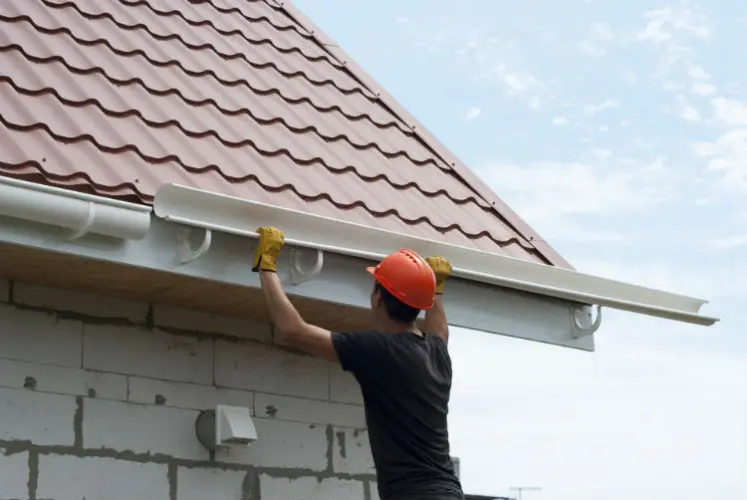When it comes to home improvement projects, replacing a roof is a significant undertaking that requires careful consideration. However, what many homeowners overlook is the condition of their gutters. Should you replace gutters when replacing the roof? In this comprehensive guide, we’ll explore the factors to consider when making this decision and why it’s often a wise choice.

The Importance of Gutters and Roofing
Protecting Your Home’s Foundation
Both your roof and gutters play vital roles in safeguarding your home. The roof shields your house from rain, snow, and other environmental elements, while the gutters channel rainwater away from your home’s foundation. Neglecting either of these components can lead to costly repairs down the line.
When to Replace Your Roof
1. Age and Condition
Roofs have a finite lifespan, typically ranging from 20 to 30 years, depending on the materials used. If your roof is nearing the end of its expected lifespan or showing signs of wear, such as cracked or missing shingles, it’s time to consider a replacement.
2. Frequent Leaks or Repairs
If you find yourself constantly dealing with roof leaks or needing frequent repairs, it may be more cost-effective in the long run to invest in a new roof rather than continuing to patch up an aging one.
3. Energy Efficiency
Modern roofing materials offer improved energy efficiency. If your energy bills have been consistently high, upgrading to a new, energy-efficient roof can lead to long-term savings.
Factors to Consider When Replacing Gutters
1. Age and Condition
Gutters, like roofs, have a finite lifespan. The typical lifespan of gutters is around 20 years, but this can vary depending on factors such as material quality and climate. If your gutters are nearing the end of their lifespan, it’s worth considering replacement.
2. Compatibility with New Roofing Materials
If you’re replacing your roof with a different type of roofing material, such as switching from asphalt shingles to metal roofing, you may need to update your gutters to ensure they are compatible and can effectively handle the new roofing material’s runoff.
3. Damage or Clogs
Inspect your gutters for damage or clogs. Damaged gutters can lead to water overflow, which can damage your home’s siding and foundation. Clogged gutters can cause water to pool on your roof, potentially leading to leaks and other issues.
The Benefits of Replacing Gutters with Your Roof
1. Enhanced Functionality
When you replace your gutters along with your roof, you ensure that both components are in sync. New gutters can effectively manage the increased water flow from a new roof, reducing the risk of overflow and water damage.
2. Preventing Water Damage*
Old or damaged gutters are less efficient at channeling water away from your home’s foundation. By replacing them, you reduce the risk of water damage to your foundation, basement, and landscaping.
3. Aesthetics and Property Value*
New gutters can enhance the curb appeal of your home. Coordinating the color and style of your gutters with your new roof can give your house a fresh, polished look. Additionally, well-maintained gutters and roofing can increase your property’s value.
Cost Considerations
Replacing both your roof and gutters simultaneously can be a significant investment. However, it’s essential to weigh this cost against the potential expenses of neglecting these components. Roof leaks and foundation damage can lead to far more expensive repairs and decreased property value.
Final Thoughts
So, should you replace gutters when replacing the roof? In most cases, the answer is yes. While it may seem like an added expense, replacing your gutters when you replace your roof is a proactive and cost-effective decision. It ensures that your entire roofing system is in optimal condition, enhancing functionality, protecting your home, and potentially increasing its value. Before embarking on this project, consult with a reputable roofing and gutter professional to assess your specific needs and budget, helping you make an informed decision that will benefit your home in the long run.



Leave a Reply